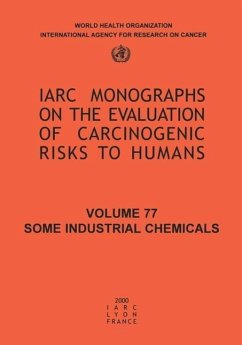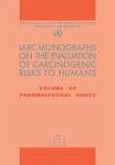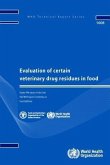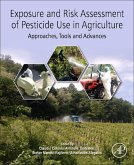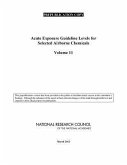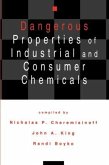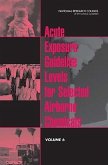Evaluates or re-evaluates the carcinogenic risks to humans posed by exposure to sixteen organic industrial chemicals. These included some aromatic amines (ortho-toluidine, 4-chloro-ortho-toluidine, and 5-chloro-ortho-toluidine), some ethanolamines (di- and triethanolamine and N-nitrosodiethanolamine), and three esters [di(2-ethylhexyl) phthalate (DEHP), di(2-ethylhexyl) adipate, and cinnamyl anthranilate]. Seven of the sixteen compounds were evaluated in previous IARC Monographs and are reconsidered here in the light of new evidence. Three chemicals were classified or reclassified as probably carcinogenic to humans: ortho-toluidine, 4-chloro-ortho-toluidine, and glycidol. Four compounds, evaluated here for the first time, namely 2,2-bis(bromomethyl)propane-1,3-diol, 2,3-dibromopropan-1-ol, ethylbenzene, and nitromethane, were classified as possibly carcinogenic to humans. N-Nitrosodiethanolamine, which can readily be formed from either di- or triethanolamine in the presence of inorganic nitrite, remained classified as possibly carcinogenic to humans. For eight compounds, including 5-chloro-ortho-toluidine, coumarin, pyridine, diethanolamine, triethanolamine, di(2-ethylhexyl) adipate, and cinnamyl anthranilate, evidence was judged inadequate to classify these compounds according to their carcinogenicity in humans. The most extensive monograph is devoted to an evaluation of di(2-ethylhexyl) phthalate (DEHP), which had previously been classified as possibly carcinogenic to humans. Using assessment criteria recently established for compounds that induce peroxisome proliferation in the liver, the evaluation downgraded DEHP to the group of compounds that cannot be classified. Two other compounds that cause peroxisome proliferation, di(2-ethylhexyl) adipate and cinnamyl anthranilate, were also evaluated as not classifiable as to carcinogenicity to humans.
Hinweis: Dieser Artikel kann nur an eine deutsche Lieferadresse ausgeliefert werden.
Hinweis: Dieser Artikel kann nur an eine deutsche Lieferadresse ausgeliefert werden.

